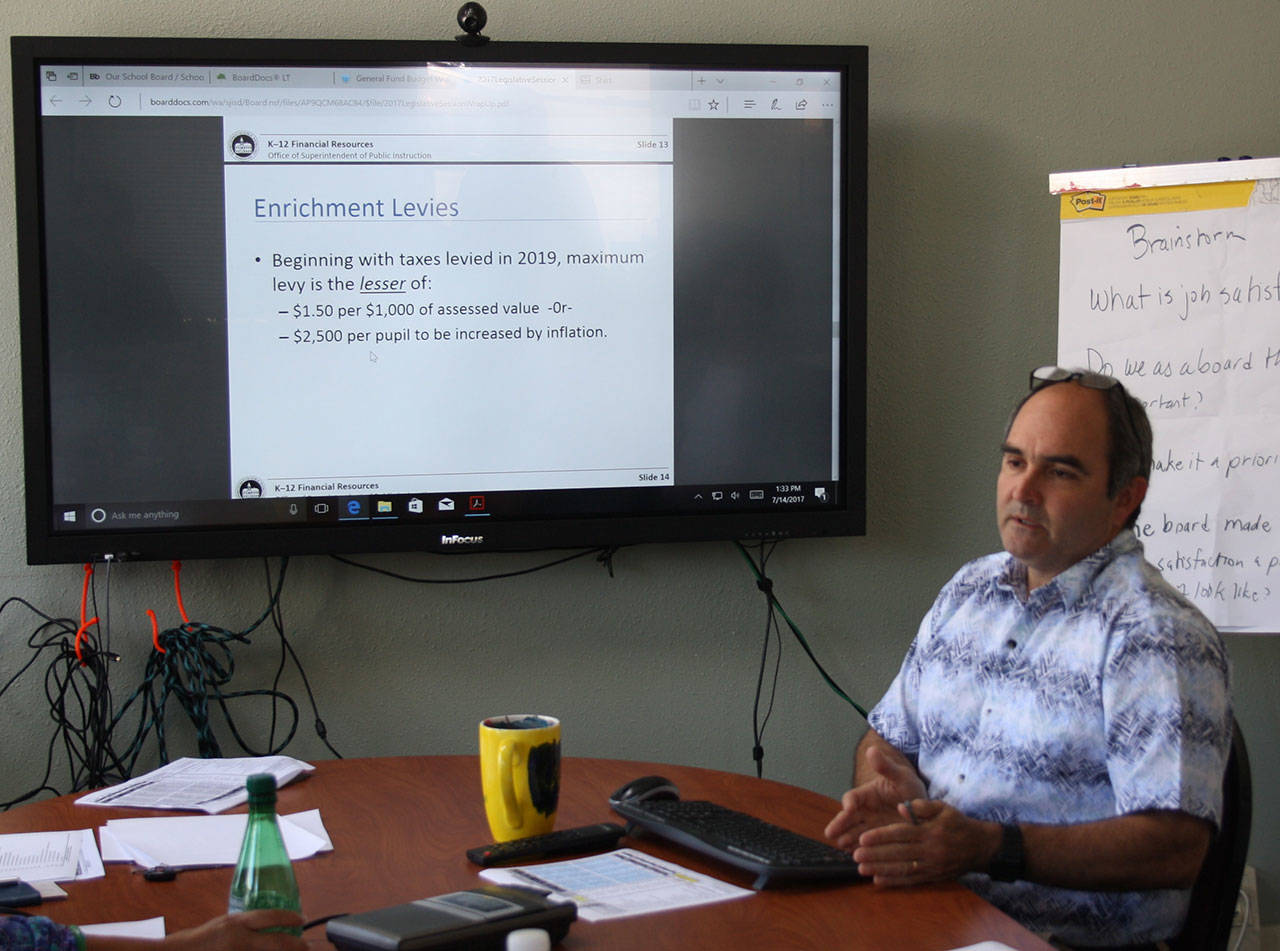Washington’s recently passed budget adds billions to fund public K-12 education, but locally, property taxes will rise, while less money may fund local schools.
“The big questions are; how much will state dollars go up and will local districts get more money or less money than they do now?” said Lopez Island School District President John Helding.
According to the budget, state property taxes earmarked for education will increase, while local levies will be capped.
Whether districts with high property values, like San Juan County, will benefit or lose, is yet to be seen.
“Right now, it’s all speculation,” said José Domenech, San Juan Island School District business manager. He expects to be notified of the exact amount the district will receive in the next few weeks.
According to the budget, $7.3 billion will be added over four years in state education spending. By 2019, districts have to cap local school levies.
This levy cap, said Domenech, would give the district’s roughly 800 students about $200,000 less than the last local levy. It will be a similar amount for Orcas Island School District, said Keith Whitaker, business manager. Lopez’s roughly 230 students would lose about $500,000, said Helding.
According to the two-year state budget, starting in 2019, the maximum levy amount for districts must be the lesser of $1.50 per $1,000 of assessed value property or $2,500 per student. Domenech said local district officials can levy what they want in 2018.
Gov. Jay Inslee attests that these new regulations will meet the requirements of a 2012 state Supreme Court order known as the McCleary decision to “fully fund” education.
“This budget, at long last, meets our constitutional obligations to fully fund basic education, and addresses the responsibilities we have under the McCleary decision to equitably fund our schools,” said Inslee in a statement after the budget was signed.
One way the state budget will “equitably fund” schools is by paying for administrators’ and teachers’ salaries based on statewide averages.
According to a presentation provided by Domenech, schools’ administrators and teachers are mostly paid through local funds. That means wealthier districts can afford to levy higher tax rates and hire more staff, with higher wages than lower income districts.
The University of Washington’s Runstad Center for Real Estate reports that the median San Juan County house price is $453,100.
Next year, reads the budget, state property taxes for education will increase about 80 cents to $2.70 of $1,000 assessed value property. Homeowners who qualify for the senior citizen tax-exemption program will not be affected by the increase.
Domenech said 10 San Juan Island School District teachers are currently paid with local levy funds and not from the state property taxes for education. According to Whitaker, about eight Orcas teachers are paid through local funds.
According to Helding, local levies are currently earmarked for “maintenance and operations,” but under the budget changes, they will be earmarked for “enrichment.”
What programs qualify for “enrichment,” said Helding, and “basic education,” are currently unclear.
Domenech said state officials have until the 2018-19 school year to define those terms.
Local districts had to draft allocations for staff last spring, before the state budget was passed. Inslee signed the budget into effect about an hour before the deadline. If the state budget hadn’t been signed by midnight on June 30, several state agencies would have closed and thousands of state employees would have been laid off in a what lawmakers call a “government shutdown.”
Whitaker said three Orcas teachers will not return next year if the district doesn’t receive more state funds.
Domenech said San Juan Island School District is slated to receive $240,000 additional dollars from the state. This is part of the new budget to fund smaller class sizes for grades K-3.
Without this money, the district could not have rehired two teachers next year.
The money will pay for a first-grade teacher. Without this teacher both first- and second-grade students would be combined to one class next year.
It will also pay for a special education teacher for the middle school. This was requested last May when the board agreed to move the sixth-grade from the elementary school to the middle school next year. The money does not cover a sixth-grade teacher, which was also requested with the grade move.
District budgets were turned in to the state on July 17.
The next San Juan Island School Board meeting is at 5 p.m., Tuesday, July 25 at the Friday Harbor High School library. It will include a public hearing on the budget.



